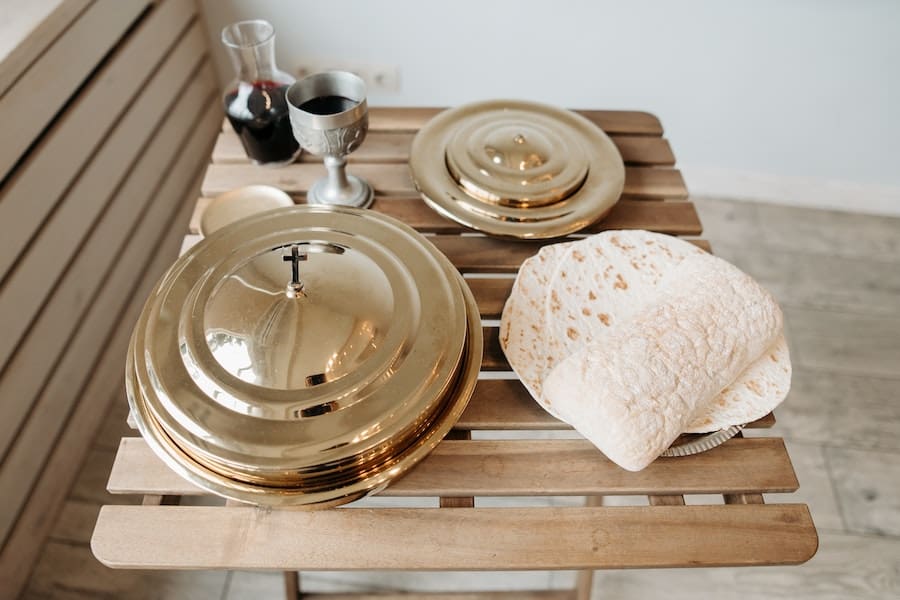Welcome to the fascinating world of pewter! A versatile and enduring alloy, pewter has held a special place in human history for centuries. From its humble origins in ancient civilizations to its prominent role in medieval times and beyond, pewter’s allure has transcended generations. In this article, we delve into the captivating story of pewter, exploring its composition, production techniques, and the craftsmanship that elevates it to an art form. Join us on this journey of discovery as we unravel the secrets behind this timeless alloy and understand why it continues to charm and captivate artisans and enthusiasts in the modern world.
What Is Pewter Made Of?
Pewter is an alloy composed primarily of tin, with small amounts of other metals added to enhance its properties. The typical pewter components include around 85-99% tin, along with a mixture of antimony, copper, and sometimes bismuth. These additional elements contribute to the pewter’s hardness, strength, and luster, making it an ideal material for crafting various items, from decorative objects to tableware. The unique blend of metals in pewter has contributed to its historical significance and continued popularity in traditional and contemporary craftsmanship.
The Origins And History Of Pewter
Pewter’s origins can be traced back to ancient civilizations, where early forms of the alloy were used for various practical and ornamental purposes. The exact origins of pewter are somewhat obscure, but it emerged around 3000 BCE in the ancient Near East. Archaeological evidence suggests that the earliest pewter-like objects were crafted in the region that is now modern-day Iran and Turkey.
During the Bronze Age, pewter spread across Europe, particularly in the Celtic regions. The Celts were renowned for their skilled metalworking, and pewter became a popular material for creating everyday items like bowls, drinking vessels, and decorative objects.
However, it was during the medieval period that pewter indeed rose to prominence. From the 12th to the 16th century, pewter became the preferred material for tableware and household items among the upper and middle classes. Its popularity can be attributed to the fact that pewter was more affordable than silver and gold while still possessing an attractive silvery appearance.
Pewter guilds emerged in various European countries, overseeing the production and quality of pewter items and ensuring the protection of the craft’s secrets. As the demand for pewter grew, so did the innovation in production techniques, allowing for greater intricacy and artistic expression in pewterware.
With the advent of the Industrial Revolution in the 18th century, pewter faced stiff competition from cheaper materials like porcelain and mass-produced ceramics. This led to a decline in traditional pewter craftsmanship. Still, it also opened up new opportunities for pewter’s use in the manufacturing of machine parts, electrical components, and other industrial applications.
In the 20th century, there was a revival of interest in traditional crafts and heritage, leading to a resurgence in pewter’s popularity as a material for artistic expression and craftsmanship. Today, pewter continues to be cherished for its historical significance and unique aesthetic appeal, valued by collectors, artisans, and those who appreciate the enduring charm of this ancient alloy.
The Composition Of Pewter
- Tin is the primary component of pewter and forms the majority of the alloy. It provides a distinctive, silvery appearance and is responsible for the pewter’s malleability, making it easy to work with for various applications.
- Usually present in small quantities, antimony is added to the pewter to increase its hardness and strength. This addition helps pewter resist bending and denting, ensuring its durability.
- Copper is another essential element in pewter’s composition. It adds toughness to the alloy, contributing to its ability to hold intricate designs and engravings. Copper also enhances the luster and warmth of the finished pewter product.
- Some modern pewter formulations may include bismuth as an alternative to or in conjunction with antimony. Bismuth helps reduce the risk of tin pests, a phenomenon where tin can transform at very low temperatures, leading to structural changes.
The Art And Craftsmanship Of Pewter-Making
Design and Casting: The pewter-making process often begins with creating intricate designs. Skilled artisans carve or mold the desired patterns onto materials such as plaster or resin, creating molds for casting. Molten pewter is then carefully poured into these molds, allowing it to cool and take on the desired shape. This step is critical in shaping the final product, whether a delicate figurine or an elegant tableware piece.
Metalworking and Finishing: After casting, the pewter undergoes various metalworking techniques. Artisans meticulously remove imperfections or excess metal to refine the piece’s details. This may involve polishing, filing, and buffing to achieve a smooth and flawless surface. Adding decorative elements and intricate engravings is also part of this stage, showcasing the artisan’s expertise and creativity.
Joining and Assembly: Sometimes, pewter items require multiple components to be joined together. Artisans skillfully solder or weld these parts to create cohesive and complex structures, such as pewter teapots with attached handles and spouts. This delicate process demands precision and a keen eye for detail.
Patination and Surface Treatment: Pewter items often undergo patination or surface treatments to enhance their appearance and protect them from tarnishing. Depending on the desired finish, artisans may apply special coatings, oxidizing agents, or decorative accents to achieve unique textures and colors.
Artistic Expression: Pewter’s malleability and versatility allow artisans to express their creativity freely. From classic designs inspired by historical periods to modern, abstract creations, pewter-making embraces a diverse range of artistic styles and expressions.
Preservation of Tradition: Many pewter artisans continue to uphold traditional techniques passed down through generations. This commitment to preserving heritage ensures that the artistry and craftsmanship of pewter-making endure over time.
Contemporary Innovations: While tradition remains a cornerstone of pewter craftsmanship, modern artisans also incorporate innovative methods and technologies. This fusion of tradition and innovation paves the way for exciting new designs and applications of pewter in contemporary art and design.
Caring For Pewter Items
Handwashing:
Wash pewter items by hand using warm water and mild dish soap. Avoid using harsh chemicals or abrasive scrubbers, as they can damage the surface and patina of the pewter. After washing, dry the items immediately with a soft cloth to prevent water spots.
Polishing:
Regularly polish pewter items with a soft, non-abrasive cloth. Commercial metal polishes specifically formulated for pewter can also be used. Gently rub the surface to remove the tarnish and restore the shine.
Patina Preservation:
Many pewter items develop a desirable patina over time, adding character and depth to the piece. If you prefer to maintain this aged appearance, avoid over-polishing, as it may remove the patina.
Storage:
When not used, store pewter items in a clean, dry place away from direct sunlight and excessive humidity. Consider wrapping the pieces in a soft cloth or acid-free tissue paper to protect them from scratching and tarnishing.
Displaying:
If displaying pewter items, use stable and flat surfaces to prevent accidental tipping or falling. Avoid placing pewter in direct contact with wood, as certain woods may contain acids that can react with the pewter surface.
Avoiding Harsh Chemicals:
Keep pewter away from household chemicals, acidic foods, and beverages, as they can cause damage or tarnish the metal. If pewter comes into contact with such substances, rinse it immediately and dry it thoroughly.
Handle With Care:
Handle pewter items carefully to avoid dents, scratches, or bending. Always lift and hold items by their sturdier parts, such as handles or bases, to prevent unnecessary stress on delicate areas.
Final Words
In conclusion, pewter is a remarkable alloy with a fascinating history and a significant role in ancient and contemporary cultures. Comprised mainly of tin, pewter’s composition is enriched by the addition of antimony and copper, enhancing its strength, durability, and appearance. From its origins in ancient civilizations to its prominence during the medieval period, pewter has stood the test of time as a valued material for crafting functional and decorative items.
FAQ’s
What is pewter made of?
Pewter is an alloy primarily composed of tin, along with small amounts of other metals such as antimony, copper, and sometimes bismuth. The exact composition can vary, but tin is the main component, giving pewter its silvery appearance.
How is pewter made?
Pewter is made by melting the various metals in the desired proportions and mixing them to form the alloy. The molten pewter is poured into molds, which cools and solidifies into the desired shape. The pewter is then refined and finished through metalworking techniques and surface treatments.
Is pewter safe for food use?
Yes, pewter is safe for food use. Modern pewter compositions are lead-free, making them suitable for food and drinkware. However, it’s essential to purchase pewter items from reputable sources to ensure they meet safety standards.




















Leave a Reply